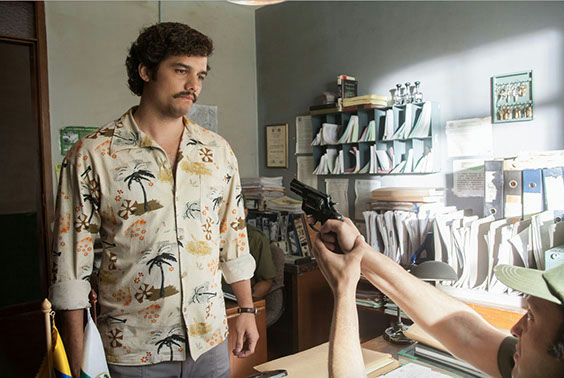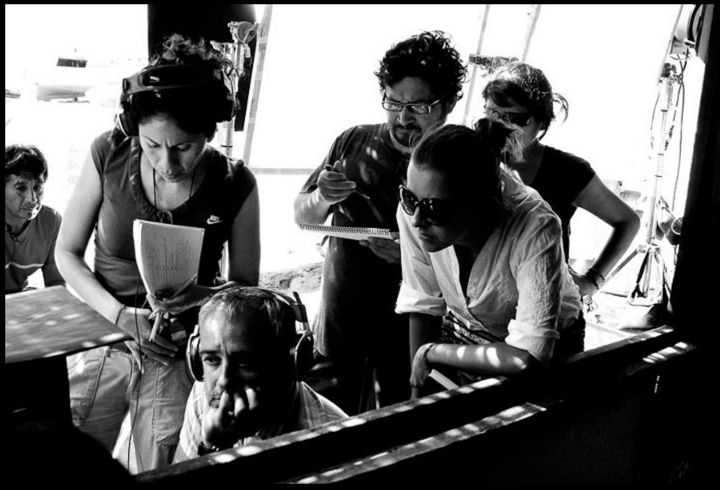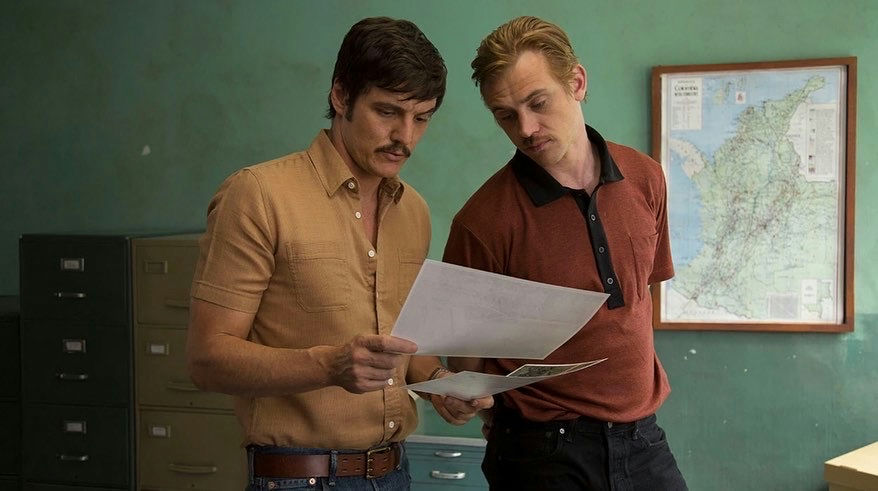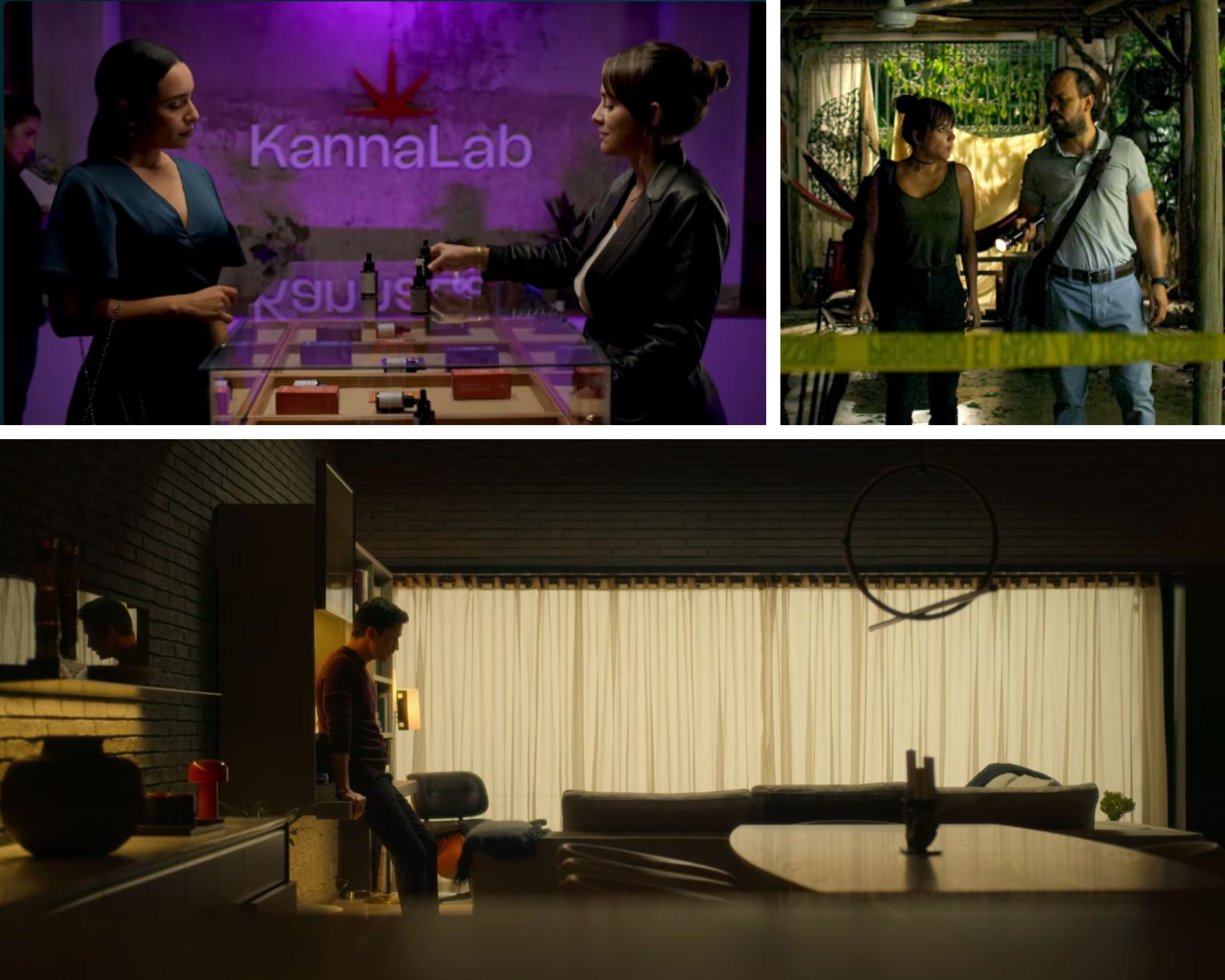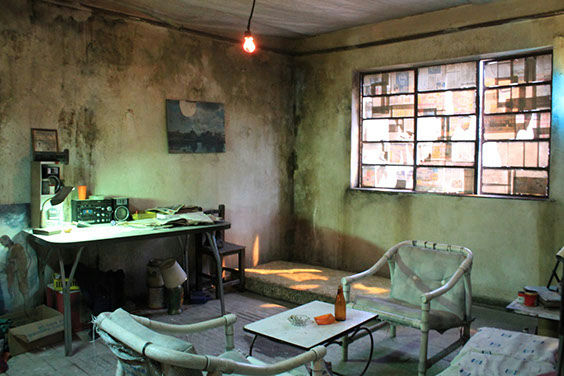
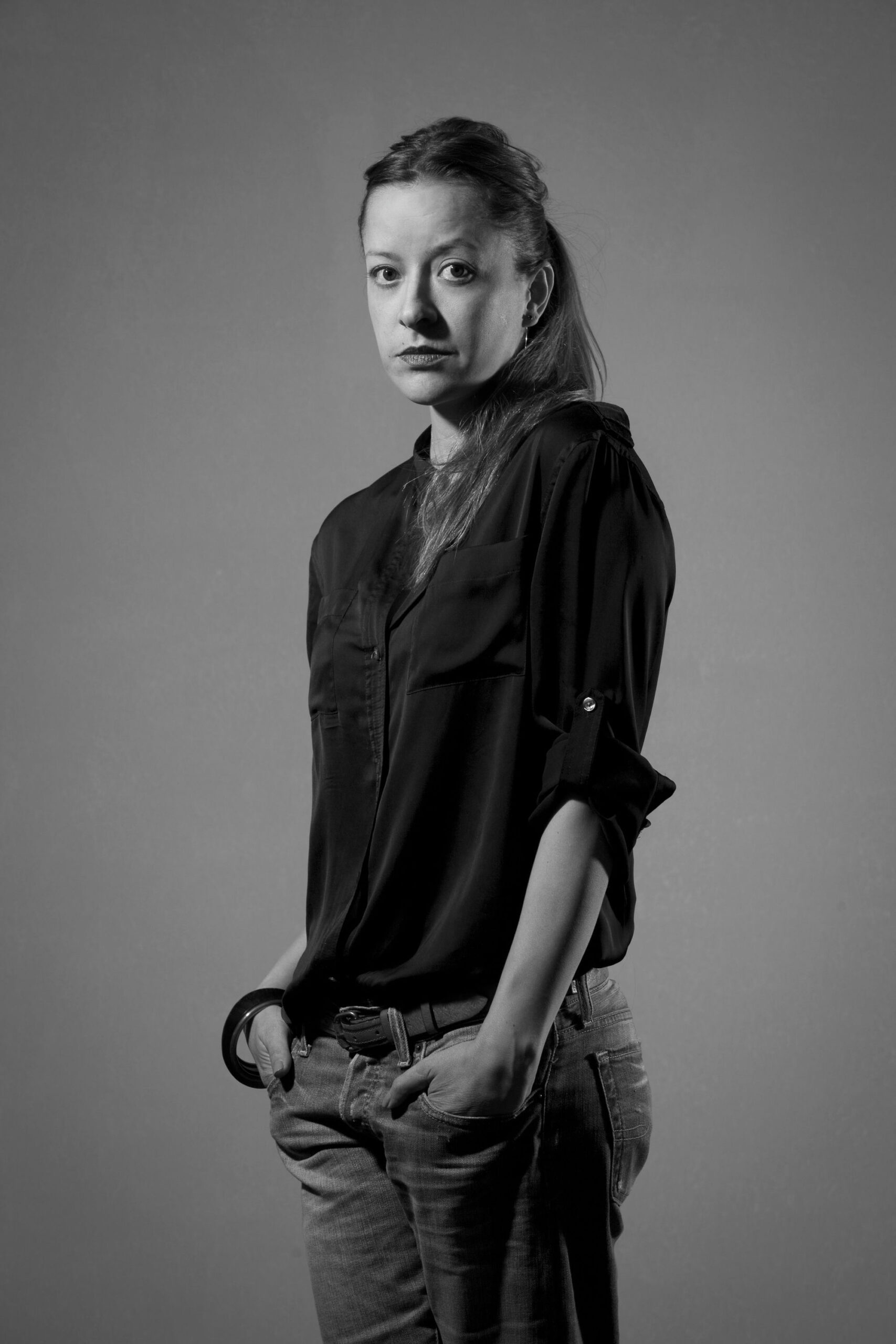
Diana started her career in the film industry as a visual consultant while studying photography at the New School in NYC in 2004. She then expanded into Art Direction and Production Design where she blends her knowledge of architecture, color theory, and costume and interior design to create a cohesive visual image and telling a story.
PDC: Hola Diana, thank you so much for taking the time to speak with me today. Where are you right now, I feel like you are always on the go?
Diana: I’ve been living in Washington DC with my family for the past five years. I primarily work in Latin America but I’m starting to take on projects in the United States. I love being able to travel for work! Traveling allows me to totally focus on that ongoing project. When I am on location I immerse myself in the universe I am creating. Then when I come back, I have my other life in DC. I was speaking with one of my design heroes recently at The Gathering, and we were talking about how the secret to a long career is the ability to live in both worlds. It's grounding to come back to your home, in a neighborhood in the woods, and be surrounded by people that have no idea what you do or who you are. It’s refreshing and keeps it real.
PDC: That is so true! Speaking of a double life, you began your career as an architect? What was your journey to becoming an art director and production designer?
Diana: I graduated as an architect at la Universidad de Los Andes in Colombia. However, before getting my degree I became a little obsessed with the structural elements of architecture. During that time, a kind of conflict grew inside me between two-dimensional and three-dimensional art design. I loved setting the stage, drawing plans, sketching, pro- portion, colors, and creating things, but I was curious to see how architecture and design looked through my photography.
Then for my thesis I decided to research and design a skyscraper in Bogotá. I knew I had to go to New York for inspiration and to do my research, where else? There was a kind of magic when I walked around the City. I couldn’t stop taking pictures of everything and making collages with my photographs, so I ended up studying photography at The New School. I lived with some Colombian friends who were also studying film at NYU, and they began asking me if I wanted to art direct their short films. I had no idea at the time what it meant, but once I started working with them everything clicked. My love for two -dimensional compositions and storytelling was all there, and that was the beginning of my career shift.
PDC: I find it so fascinating when people’s passions, experience, and backgrounds develop into something even greater than what they had originally envisioned. I think it’s important to remember that the universe has something bigger for all of us if we just let things happen. It’s always a unique path for everyone.
Diana: Yeah, I didn’t know this was going to happen. I didn’t even know that this door existed, and I was perfectly happy studying architecture. Though I was struggling a little during my thesis, I was almost at the finish line to becoming an architect. However, when I started working on set all the layers began to make sense. My love for so many things, along with all my experiences, education, and skills just kind of aligned.
PDC: With such an agglomeration of different disciplines and experiences, do you see yourself developing into a DP or Director?
Diana: I could definitely see myself collaborating as a DP or even direct in the future, perhaps in a horizontal structure, as a collective combining all of our skills, backgrounds, and industry experience. I would just need to figure out all the technical language for the equipment and technology. How great would it be if we all rotated our roles on set and put ourselves in each others’ shoes?
I just finished an Amazon called Billis(2023), set in mid 80’s Bogotá, where the DP and I created a very deep visual conversation. We worked very hard with the show-runners to set our own visual language, centered on a two-colors palette. The DP then got involved on another front as an artist working next to the set decorator, developing some of the art pieces for various character sets for the show. The ultimate dream will be to finally erase those credit lines and just collaborate together interdisciplinary and horizontally avoid egos to play a role in the creative process.
PDC: You’ve worked with several directors repeatedly, such as Andres Beltran, Carlos Moreno, Sebastian Cordero, and Andi Baiz. Is there someone you like working with more because you find you are more in sync and have more of a similar artistic vision? Or do you like working with several different directors?
Diana: Of course, I love working with directors repeatedly! Reaffirmation is always welcome. When I started working in this field, I worked with my friends. It was like a utopia. The cinematographer was my friend. The producer was my friend. The director was my friend. Even the actors were my friends. It was like this for 3-4 years before we all started growing.
Andi Baiz and I have been friends since school, and we definitely have a synchronicity in life. We share a sense of humor - it is very important to laugh during any creative process - so I always loved collaborating with him. Then there is my close friend Carlos Moreno, one of my hero philosophers. And Andrés Beltrán, also Colombian with whom I’ve been connecting a lot lately. We have a very fluent visual conversation, no words needed.
Sebastian Cordero from Ecuador is also a longtime friend who I met at the Sundance film festival and worked with on “Pescador”. Lastly there's Javier Fuentes León, a Peruvian director for whom I designed the debut film “Undertow” (2008). That shoot was such a magical experience for all involved, as was “Que viva la música”, my favorite project to date with Producer Rodrigo Guerrero and Director Carlos Moreno.
Diana: Through these experiences you gain a trust, and the directors begin to count on you for visual reference and feedback. It’s not easy to gain trust with people, and especially with a director. You must be able to easily interpret their vision and be able to read the person and understand what they want and start channeling all that information and make it real sets or objects from them to tell the story.
What I like most about my work is that what stays is not only what you see on the screen, but it’s the family that you create and the friends that you make long the way. It’s a very strong process of collective communion, a great mutual admiration, intimate and vulnerable.
PDC: I completely understand, it’s such a powerful connection! On a micro level, it’s like The Gathering. We were all together for less than a week, but we all left feeling intertwined and artistically rejuvenated. We became a family.
Diana: Exactly, every time I go through these experiences and then I have to stop and come back home, it feels like something is missing. You grow a synergy with people, it’s magical, significant, and addictive.
PDC: Through all your connections and experiences what has your evolution been like as an artist? Where have you seen the most growth and where are you still wanting to grow?
Jenny: Right now I'm in a place of change. It feels amazing to evolve from where you originally started and turn it around, not only once but many times in the career process.
I’ve spent a lot of time over the years researching and reinterpreting our Latin American roots - our visual heritage, the various original Columbian typologies - through art and design. For example, for "Narcos" I ended up researching this architectural urban style that we call Narco-Deco. This is a hybrid architecture that the cartels brought, especially to Cali and Medellín, in the 80’s and early 90’s. It deliberately stole styles from all around the world and periods, and adapted them to the tropical scene. Narco-Deco architecture is so eclectic and tacky, but is also very interesting. It is a a reinterpretation of materialism that originates in hyper expressionism of power and self projection as a way of fitting into the society. They would copy a Middle-Eastern-style temple, and revamp a Palladian Villa Facade and a Neo Classic French pool fountain, all in the same building, placing it inside a plantation next to a rustic air strip for example. Fascinating.....
Through this research of our limitless boundaries, especially designing for “Pescador”, “Wild district”, or “Narcos”, I finally felt that I’ve succeeded in not making my projects gauche, or the Latin cliche that we have been seeing for years. I was able to find beauty in this culture and style that I hadn’t originally seen. It was almost a sense of healing the pain and scars that came with all of this political baggage for our history and society through that design, making it interesting and new.
And now I am in a place where I feel confident to keep expanding. Although I am Colombian, I do not necessarily have to tell only Latin stories, I love that I helped create these unique universes and made us proud. I am ready to take my experience and style and inject them into other types of stories, worlds and projects horizontally.
When I look at your body of work I can very clearly see that you never wanted to project stereotypical styles. As a Colombian, I think most people expect your work to be extremely colorful and vibrant with a lot of patterns. But your hues are typically warmer, and you never have typical furniture, it’s always a mixed style and very global.
I have always fought to avoid a “touristic”, cliché image. I like to play with realistic tones independently from good or bad taste. I just want the eye to be focus on the story in a believable, not a stereotypical environment.
We tend to have many myths in our scripts that are “based on a true Colombian story”. For example, when Pablo Escobar flew the Rolling Stones into Hacienda Nápoles on his private plane for his birthday, or the time he flew another plane full of safari animals from Africa, or the jail he built for himself. These are all very cool subjects in theory, but you want to also keep a realistic perspective overall. It is very tricky to keep it universal and to visually respect the magical realism nature at the same time.
Diana: Often I want to change the story completely through the design, like on the contemporary Apple TV series “Malayerba”. Rather than talking about marijuana from a taboo perspective, we are telling the story about the business and legalization of CBD, and its path to becoming healthy alternative drug. Set in a sophisticated Bogota, a new Latin American metropolis cleaning its path through art, you can see how this is another world visually, a global background. I think it is important to evolve these kinds of stories so that we can reframe conversations and see them in different ways.
PDC: Another topic that you are changing the conversation about is sustainability. What are some of the ways that you are bringing sustainability to film?
Diana: A great example is my recent work on Llanto Máldito, which was nominated for best Art Direction in Premios Macondo, and where I worked with my close friend Andres Beltran.
Andres wanted to shoot within sacred Columbian woods in a preserved area in Bogotá. Since we had to build a cabin, I suggested that instead of just making something and destroying it, we rethink our construction process. I found a company that made prefabricated structures, and we also found a buyer for the final cabin who split the cost of construction with us. Once we finished filming we moved the home to its new location, not harming the woods at all.
I like to think sustainability for us as designers is to preserve the identity of our heritage through beauty and art, using our own local resources in the best possible way. Beyond just the cabin we were even able to sell most of the furniture and props, which we had mainly purchased used in the first place. We barely spent anything on this project because we were able to upcycle most of it and make it all back.
Instead of having many insignificant things that you just throw away after a shoot, I am now trying to fabricate special pieces of furniture and props that we can either sell or give to the crew as memorabilia. Making the props and furniture a part of our filmmaking journey gives each piece value and a sense of experience, kind of like “farm to table”, but instead “set to home”.
Several of the pieces in my upcoming film What You Wish For were designed custom alongside the director Nick Tomney and my team at Mood Colectivo. We all worked very hard to accomplish a unique style representative of the contemporary story of the film. These pieces will be one-of-a-kind and available for purchase in 2023.
PDC: That is such a great approach! You also mentioned Mood Collectivo, can you tell us a little more about this?
Diana: Absolutely! It is an initiative I began in Bogotá and Latin America in 2019, where I convened my usual teammates Tati and Dani and created a space for expanding ideas and styles. I have always believed that collaborative teamwork is the best way to create art, and therefore gathered an inclusive group of designers and visual artists who work together in various disciplines. Mood Collectivo allows us to collaborate on different projects at the same time, while also creating a loyal community. Our membership began with a combination of set decorators, prop masters, and art directors, but we have evolved to include costume designers, make-up artists, and scenic painters. And now we are proud to also include our most recent collaborator, a cinematographer!
PDC:
I feel like we could talk forever, but I know that you have to leave soon, so my last question to you is what piece of advice would you give to someone like me who is just starting out?
Jenny:
I would say to always go with what your gut is telling you, and trust yourself. Never stop learning and always go back and reflect on who you are, why you are here, and what it is that you love about what you do. Production designers have to constantly change their source of creativity to find new ways to discover beauty and inspiration. It doesn’t matter if it is a horrifying murder scene or a dreamed-up planet, we have the power to bring things visually to life, and to tell people a story through art with our vision and uniqueness. That is beautiful.
PDC:
That’s a very powerful piece of advice, thank you so much Diana, I’ve had a great time getting to know you better and I know this will resonate with the readers as well!
